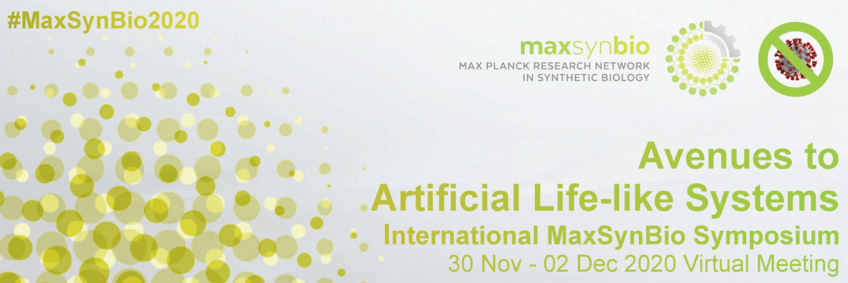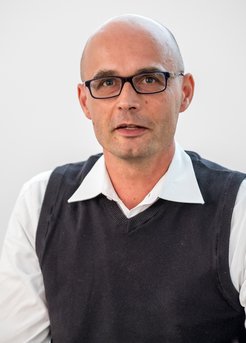
Joachim Spatz
Max Planck Institute for Medical Research, Heidelberg
Keynote Speaker for MaxSynBio

Joachim P. Spatz joined the Max Planck Institute for Medical Research in 2016 as Director. From 2004-2015 he was Director at the Max Planck Institute for Intelligent Systems (former MPI for Metals Research). From this time on he is also a Full Professor at the University of Heidelberg and head of the Dept. of Biophysical Chemistry. He was an Associated Professor for Biophysical Chemistry at the University of Heidelberg from 2000-2004. From 1999-2000 he received his habilitation in Physics at the University of Ulm. He was a PostDoc in the group of Professor Jacques Prost and Albrecht Ott at the Institut Curie, Paris, in 1997 - 1998. He received his Diploma in Physics (1994) and his Ph.D. in Physics (1996) from the University of Ulm under the supervision of Prof. Möller (founding Director of the Leibniz Institute of Interactive Materials in Aachen). He is member of the Heidelberg Academy of Sciences and Humanities. Among other awards, he received the Gottfried Wilhelm Leibniz Prize of the German Science Foundation in 2017.
Spatz Group on MaxSynBio Website
Keynote Presentation: Compartments for Synthetic Cells
Session "Compartments" | Monday, 30 Nov 19:30 - 20:00
Abstract: The evolution of cellular compartments for spatially and temporally controlled assembly of biological processes was an essential step in developing life by evolution. Synthetic approaches to cellular-like compartments are still lacking well-controlled functionalities, as would be needed for more complex synthetic cells. With the ultimate aim to construct life-like materials such as a living cell, matter-to-life strives to reconstitute cellular phenomena in vitro – disentangled from the complex environment of a cell. In recent years, working towards this ambitious goal gave new insights into the mechanisms governing life. With the fast-growing library of functional modules assembled for synthetic cells, their classification and integration become increasingly important. We will discuss strategies to reverse-engineer and recombine functional parts for synthetic eukaryotes, mimicking the characteristics of nature’s own prototype. Particularly, we will focus on large outer compartments, complex endomembrane systems with organelles and versatile cytoskeletons as hallmarks of eukaryotic life. Moreover, we identify microfluidics and DNA nanotechnology as two highly promising technologies which can achieve the integration of these functional modules into sophisticated multifunctional synthetic cells.
